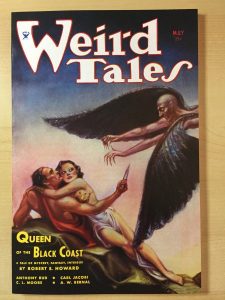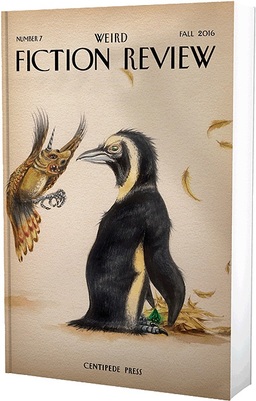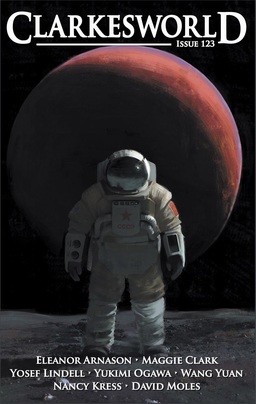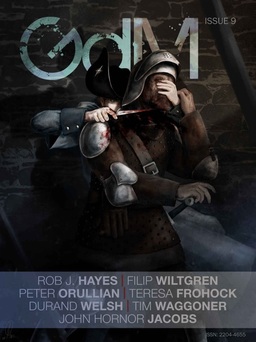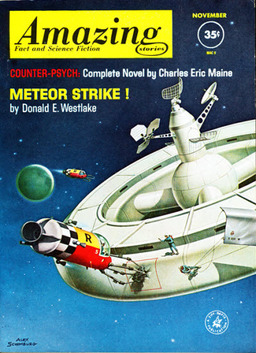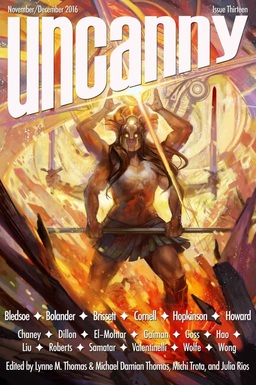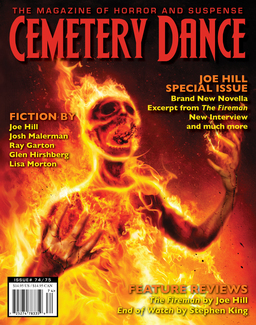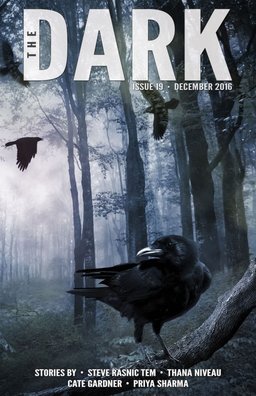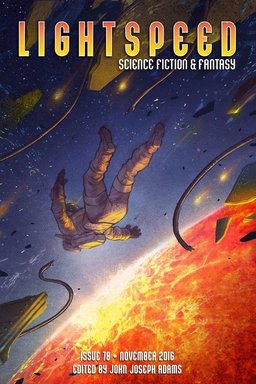December 2016 Asimov’s Science Fiction Now on Sale
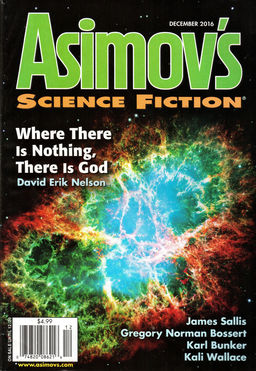 The December 2016 Asimov’s Science Fiction is something of a landmark, in that it’s the last monthly issue of Asimov’s — a magazine that has been publishing continually for 39 years. It’s as close as we come to an institution in this field, and while change is sometimes scary, in this case I think it’s a good thing. Like its sister publication Analog, the magazine is moving to a bimonthly schedule. I always enjoy the big double issues, and getting six of them a year for each magazine is something to look forward to.
The December 2016 Asimov’s Science Fiction is something of a landmark, in that it’s the last monthly issue of Asimov’s — a magazine that has been publishing continually for 39 years. It’s as close as we come to an institution in this field, and while change is sometimes scary, in this case I think it’s a good thing. Like its sister publication Analog, the magazine is moving to a bimonthly schedule. I always enjoy the big double issues, and getting six of them a year for each magazine is something to look forward to.
The last monthly issue has stories by Karl Bunker, Gay Partington Terry, Gregory Norman Bossert, James Sallis, Kali Wallace, and David Erik Nelson. Here’s Sheila’s full description:
Our blockbuster December 2016 novella, “Where There Is Nothing, There Is God” by David Erik Nelson, is a rollicking Time Portal tale. It’s filled with a cast of unsavory characters who operate as though Cotton Mather’s favorite TV show was Breaking Bad. In this vastly entertaining story, it’s hard to know whom to root for so just make sure your inertia dampening system is on and enjoy the ride!
Once you decompress from Colonial Massachusetts, be prepared for a sharp shift to Gregory Norman Bossert’s wild depiction of “HigherWorks” in a future London; an eerie discovery “On the Cold Side of the Island” has long-term effects on the lives of three teens in a new tale by Kali Wallace; James Sallis escorts us to another island where we learn “How the Damned Live On”; new to Asimov’s author Gay Partington Terry’s magical tale explains the significance of “Empty Shoes by the Lake”; and in Karl Bunker’s “They All Have One Breath” artists who want to create interesting work must strive against the banality of a “perfect” society controlled by artificial intelligence.
Robert Silverberg’s Reflections column examines what it means to be as “Dead as a Dodo” in this modern age; Peter Heck’s On Books reviews new works by Lois McMaster Bujold, Charles Stross, Tim Powers, Indra Das, Lavie Tidhar, and others; plus we’ll have an array of poetry and other features you’re sure to enjoy.
The cover art is by NASA. The guest editorial is by Sarah Pinsker.
